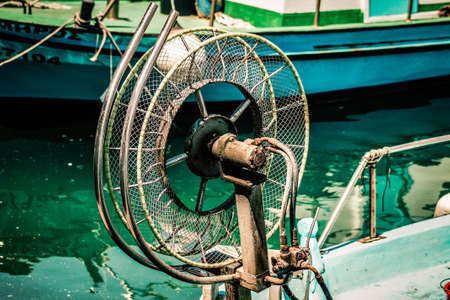1. Understanding the Indian Angling Landscape
India, with its vast river systems, coastal stretches, and inland water bodies, has nurtured a rich and diverse angling culture for centuries. From the traditional bamboo fishing rods used by local communities in Assam to the artful casting with handmade lines in Kerala’s backwaters, fishing here is more than just a means of livelihood—it’s a tapestry of regional customs and ingenious adaptations. In recent years, there has been a noticeable shift as recreational angling has gained popularity among urban youth and enthusiasts across the country. This rise in leisure fishing has spurred demand for affordable yet durable fishing equipment that suits both beginners and seasoned anglers. Local manufacturers are responding with innovative rod and reel designs that balance economy and sustainability, making it easier for people from all walks of life to enjoy India’s waterways responsibly. This blend of tradition and modern accessibility sets the stage for exploring how Indian-made fishing gear is meeting the twin goals of affordability and eco-friendly design.
2. Design & Affordability: Spotlight on Indian-Made Gear
When it comes to fishing in India, the blend of affordability and sustainable design is not just a trend but a necessity for many anglers. Local manufacturers have risen to this challenge by creating fishing rods and reels that are specifically tailored for Indian waters, keeping in mind the unique demands of our rivers, lakes, and coastline. The focus is always on balancing cost-effectiveness with quality and durability, ensuring that both beginner and seasoned anglers can find suitable gear without burning a hole in their pockets.
Understanding Local Manufacturing Approaches
Indian manufacturers typically prioritise the use of readily available materials such as fiberglass, carbon composites, and locally sourced metals. These materials provide strength and flexibility while keeping production costs manageable. Importantly, there is a growing emphasis on sustainability—many brands now look for eco-friendly components or adopt manufacturing processes that minimise environmental impact.
Key Considerations in Design
| Design Aspect | Common Practices in India |
|---|---|
| Material Selection | Fiberglass, carbon fibre blends, corrosion-resistant alloys for reels; bamboo still used by traditional makers |
| Cost-Effectiveness | Streamlined features, limited but essential functionalities, local assembly to reduce logistics costs |
| Sustainability | Use of recyclable materials, minimal packaging, energy-efficient production lines where possible |
| Adaptation to Indian Waters | Focus on sturdiness for monsoon-fed rivers, anti-corrosion features for coastal regions, versatile rod lengths |
Why It Matters for Indian Anglers
The Indian fishing community values gear that can withstand rough use and varied conditions—from rocky riverbanks to brackish estuaries. By focusing on affordable yet thoughtfully designed equipment, local brands empower more people to enjoy angling as a hobby or livelihood. This approach also helps reduce reliance on imported products, boosting the local economy while promoting environmentally responsible practices.

3. Performance in Desi Conditions
When it comes to fishing in India, the diversity of waters—from the holy ghats of the Ganges to the serene backwaters of Kerala—demands gear that can withstand varied and challenging conditions. To truly evaluate the economy and sustainability of affordable Indian fishing rods and reels, we took these budget-friendly options out for a field test in some of the country’s most iconic fishing spots.
Testing Across Indian Waters
We selected popular rods and reels widely available in local markets and online platforms like Flipkart and Amazon India, focusing on brands trusted by the desi angler community. Our testing grounds ranged from busy riverbanks in Varanasi, where strong currents and sudden tugs are routine, to quiet brackish estuaries near Chennai, where patience is key but so is sensitivity to gentle bites.
Durability Under Pressure
The first thing we noticed was how well these affordable combos held up during prolonged use. The rods, mostly made from locally sourced bamboo or entry-level fiberglass, showed surprising resilience against repeated casting and retrieval. Even after hours of use, there was minimal flexing or cracking—an important factor for Indian anglers who often spend entire weekends at their favourite spots.
Handling & Practicality
Handling these rods in real-life conditions revealed a lot about their design. Light-weight models were easy on the arms—a blessing when you’re waiting for that elusive catch under the hot sun. The reels’ smoothness varied, but most managed decent line retrieval without frequent tangles or jams. For the price point, their performance was more than satisfactory, especially considering the unpredictable nature of local fish species and water flow.
Ultimately, these affordable Indian fishing rods and reels proved themselves as practical choices for both beginners and seasoned anglers looking for sustainable gear without breaking the bank. Their adaptability across different terrains and water types shows just how well they cater to our unique desi fishing culture.
4. Eco-Friendly Angling—Fact or Fiction?
In the Indian context, ‘sustainable design’ goes beyond just using recyclable materials—it encompasses affordability, local availability, and harmony with traditional fishing practices. For many anglers across India’s coastal towns and riverside villages, affordability is a key factor when choosing rods and reels. But does this economic accessibility come at the expense of environmental responsibility?
What Does Sustainable Design Mean in India?
Sustainable design for Indian fishing gear typically includes:
| Aspect | Description |
|---|---|
| Material Sourcing | Preference for locally available bamboo, recycled plastics, or metal alloys that are less polluting to manufacture. |
| Durability | Products designed to withstand frequent use, reducing the need for replacement and minimizing waste. |
| Cultural Fit | Gear aligns with traditional methods and supports local craftsmanship, preserving heritage. |
| Affordability | Low-cost gear accessible to rural communities without sacrificing basic quality. |
Do Affordable Rods & Reels Support Environmental Goals?
The reality is mixed. On one hand, affordable Indian rods and reels often utilise local materials and simple designs, reducing carbon footprint from transportation and complex manufacturing. For example, rods made with bamboo or recycled plastic contribute less pollution compared to imported composite alternatives. Moreover, products from small-scale Indian manufacturers tend to support local economies while encouraging sustainable livelihoods.
Challenges to Eco-Friendliness
However, not all budget-friendly options are eco-conscious. Some cheap rods rely on low-grade plastics or metals that degrade quickly and add to landfill waste. Additionally, lack of standardisation sometimes leads to products with shorter lifespans, prompting frequent replacements.
A Balanced View: Fact or Fiction?
Sustainable design in the Indian angling sector is evolving. While many affordable rods and reels do promote certain aspects of sustainability—like supporting local materials and crafts—they often fall short in terms of long-term durability and responsible disposal. The challenge is to strike a balance where cost-effective gear also meets robust environmental standards. As consumer awareness grows, so does the market for eco-friendly angling equipment that aligns with both environmental goals and the realities of the Indian marketplace.
5. Voices from the Ground
When it comes to affordable fishing rods and reels in India, the most authentic perspectives come straight from the banks of our rivers and lakes. Local anglers across regions—whether at the Ganges, Godavari, or small village ponds—share a common expectation: durability without breaking the bank. For many, fishing is not just a hobby but also a supplementary livelihood, making economy and reliability paramount.
Expectations Rooted in Daily Realities
Indian fishers often stress the need for gear that can withstand rough use and unpredictable monsoons. “We look for rods that won’t snap if we land a big Rohu or Catla,” says Arvind, a seasoned angler from West Bengal. Many echo his sentiments, valuing basic yet sturdy construction over imported aesthetics.
Feedback on Local Gear
Feedback about Indian-made rods and reels is candid and constructive. While some appreciate brands like SureCatch and local manufacturers for their cost-effectiveness, others note issues such as lack of smooth drag systems or corrosion resistance. Yet, many express pride in supporting homegrown products, especially when improvements are visible season after season.
Grassroots Innovations: Economy Meets Ecology
Resourcefulness thrives in India’s angling communities. Fisherfolk frequently repurpose bamboo, coconut husk, or recycled plastic for rod handles and floats—simple innovations that cut costs and reduce environmental impact. Some groups are also experimenting with biodegradable lines or locally-sourced natural baits to minimize river pollution. As Ravi from Kerala puts it: “Fishing is part of our tradition. We want gear that respects our budget and our rivers.”
This grassroots feedback loop continues to shape the evolution of Indian fishing tackle—balancing affordability with ecological responsibility, guided by voices that know these waters best.
6. Choosing Wisely: Tips for Indian Fishers
When it comes to picking the right fishing rod and reel, Indian fishers need to balance affordability, reliability, and sustainability—especially given our diverse riverine, coastal, and inland water conditions. Here are some practical guidelines to help you make informed decisions without stretching your budget.
Assess Your Local Needs
First, think about where you usually fish: Are you at the Ganga banks in Varanasi, the Kerala backwaters, or a rocky stretch along the Konkan coast? Different environments call for different gear strength and flexibility. For instance, sturdy rods with corrosion-resistant reels work best in saltwater areas like Goa or Chennai, while lighter combos may suffice for freshwater ponds or rivers.
Prioritize Sustainable Materials
Look out for rods made from bamboo or recycled composites—these are not only eco-friendly but also often support local craftsmanship. Avoid plastic-heavy products that can break easily and contribute to environmental pollution. Brands that offer biodegradable packaging or participate in recycling programs are also worth supporting.
Check Durability & Repairability
Choose rods and reels that have replaceable parts and can be repaired locally. This helps extend their lifespan and reduces waste. Before buying, ask at your local tackle shop if spare parts are available nearby—a crucial point for rural or semi-urban fishers who can’t always access big city stores.
Balance Cost With Performance
Avoid going for the cheapest option if it compromises on durability; instead, look for value-for-money gear with good warranties. Many Indian brands now offer combos specifically designed for local waters at reasonable prices—do check online reviews or seek advice from experienced fishers in your community WhatsApp group before purchasing.
Support Local Innovation
Whenever possible, buy from small-scale Indian manufacturers or sellers at your nearest fish market. This not only boosts the local economy but also ensures your equipment is tailored to Indian fishing realities rather than foreign standards.
By following these tips, Indian anglers can contribute to sustainable fishing practices while enjoying reliable catches—proving that smart choices lead to better experiences on every outing!

